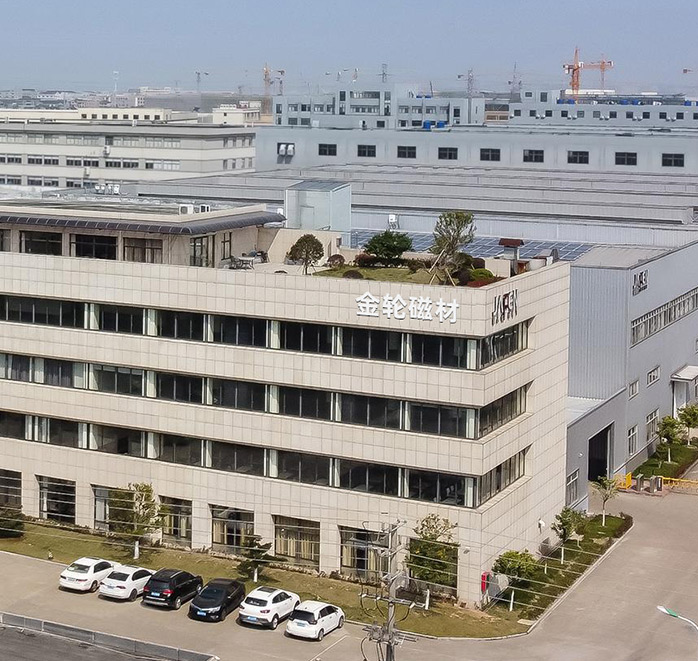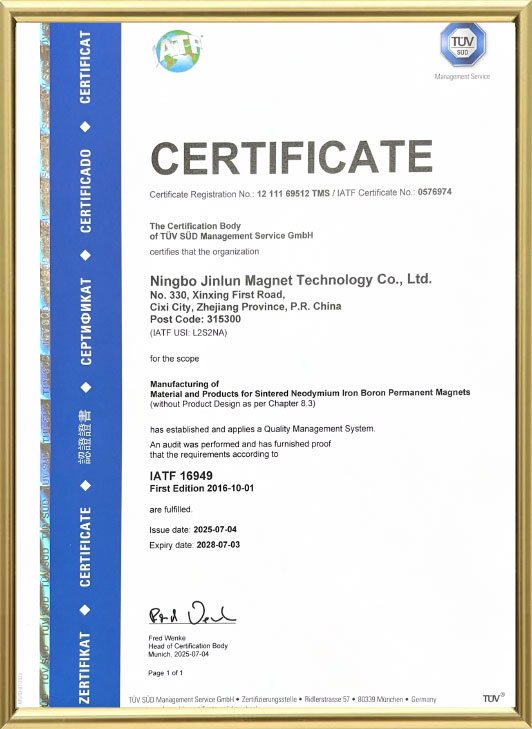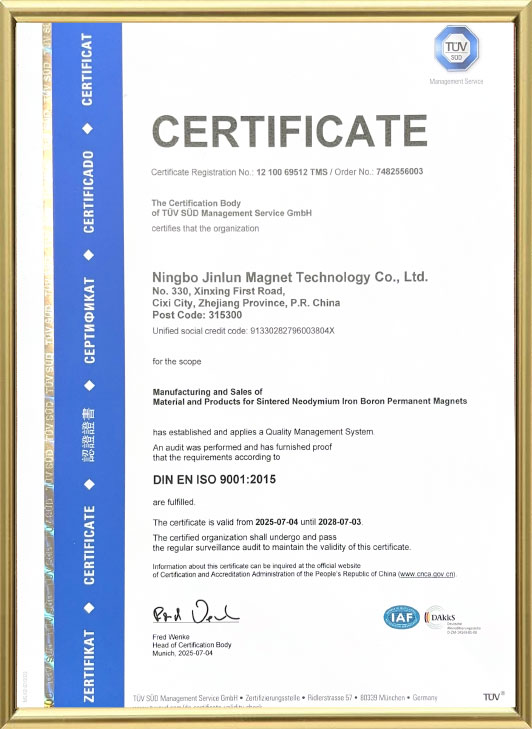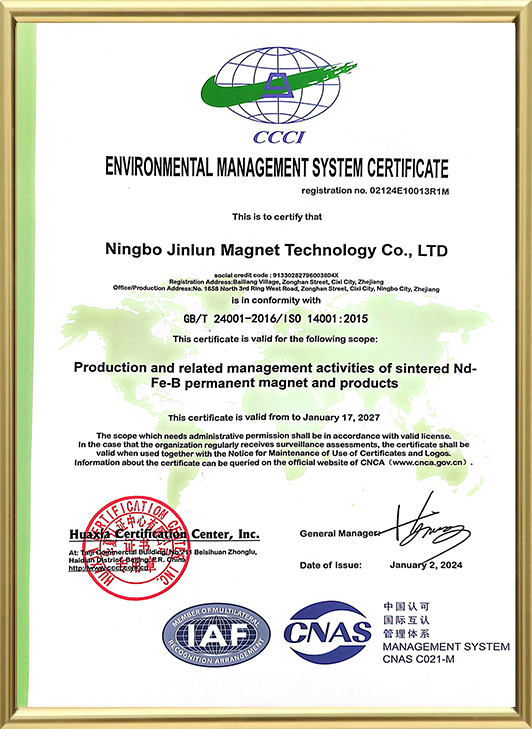I. Magnet Requirements in Consumer Electronics: A Dual Drive from Functionality to Experience
(I) Core Application Scenarios and Demand Differences
Sintered NdFeB magnets for consumer electronics are highly dependent on the specific product's functional positioning and usage scenario. Different devices exhibit significant variations in magnet performance, size, and form requirements:
Vibration Feedback Scenarios (Mobile Phones/Smart Wearables): Mobile phone linear motors and smartwatch vibration modules require miniaturized magnets, typically ranging in size from 3 to 10mm. These magnets must possess high remanence (Br ≥ 1.4T) to generate strong vibrations, while also requiring an ultra-thin design (thickness ≤ 1.5mm) to fit within the device's compact interior. For example, magnets used in flagship phone linear motors must achieve stable vibration output within a 5mm × 3mm × 1mm footprint to avoid feedback delays caused by insufficient magnetic properties. Acoustic Applications (Headphones/Speakers): TWS earphone driver units and micro speakers require magnets with a high magnetic energy product (BH) max ≥ 330kJ/m³) to enhance the magnetic field's driving force on the voice coil and improve sound quality and resolution. Furthermore, the magnets must be compatible with the sound cavity structure and are often designed in ring or special shapes. For example, TWS earphone magnets are often ring-shaped with a diameter of 5-8mm, and the inner hole accuracy must be controlled to ±0.01mm to ensure precise fit with the voice coil.
Sensing and Positioning Applications (AR/VR Devices): AR glasses' spatial positioning sensors and smart wristbands' geomagnetic sensors require magnets with high magnetic uniformity (Br deviation ≤ ±2%) to ensure stable magnetic field signals and improve positioning accuracy. These magnets are often small (2-5mm) and require low magnetic flux leakage to avoid interference with surrounding electronic components. Drive Scenario (Small Appliances/Drones): Mini fan motors and drone gimbal drive motors require magnets that balance power and temperature resistance, covering an operating temperature range of -20°C to 80°C. Magnet sizes range from 8 to 20mm, and compressive strength of 750MPa or higher is required to withstand slight vibrations during device operation.
(II) New Demands Under Consumer Electronics Trends
As consumer electronics evolve toward thinner, lighter, more integrated, and lower power consumption, demand for magnets is emerging in three new directions:
Ultra-miniaturization: Magnets used in hinge sensors for foldable phones have shrunk to 2mm × 1mm × 0.5mm, necessitating breakthroughs in miniaturization technologies such as powder molding and precision machining.
Low-Power Compatibility: The demand for longer battery life in smart devices is driving the pairing of magnets with low-power motors, requiring them to maintain a stable magnetic field even at low currents, reducing device energy consumption.
Multi-Form Customization: Demand for specialized structures is increasing, such as arc-shaped vibration motor magnets for curved phones and irregular magnets for wearable devices, requiring flexible mold design and molding processes.
II. Core Characteristics of Sintered NdFeB Magnets for Consumer Electronics: Breakthrough Performance in a Small Size
(I) Scenario-Specific Requirements for Key Performance Indicators
Unlike the industrial or automotive sectors, magnets for consumer electronics prioritize "small size, high precision, and low loss." Core performance indicators must be closely aligned with specific applications:
Magnetic Energy Product (BH) max: Based on the power requirements of the device, the BH max for TWS headphone driver magnets requires 330-380kJ/m³ to ensure powerful sound quality. The BH max for small fan motor magnets can be relaxed to 280-320kJ/m³ to balance performance and cost.
Dimensional Accuracy: The dimensional tolerance of micro-magnets must be controlled within ±0.01mm. For example, if the length deviation of a magnet in a smartwatch vibration motor exceeds 0.02mm, it will result in uneven motor assembly clearance and produce unusual noise. The curvature and chamfer accuracy of special-shaped magnets must be ≤0.005mm to accommodate curved surfaces. Corrosion Resistance: Consumer electronics are often used in everyday environments (such as sweat and humidity). Therefore, magnets require surface treatment to enhance their protection. For example, smartphone magnets often use epoxy resin coatings (5-10μm thick). Salt spray testing (neutral salt spray) must be performed for 24 hours without corrosion to prevent sweat from eroding magnetic properties.
Magnetic Leakage Control: AR/VR devices have dense internal components. Therefore, magnets require magnetic shielding or low-leakage structures to limit external magnetic flux leakage to less than 50Gs to prevent interference with sensors, displays, and other components. (II) Adaptive Optimization of Materials and Processes
To meet the performance requirements of consumer electronics, magnets require targeted optimization in both materials and processes:
Material Formulation: A low-heavy rare earth formula is used to maintain basic performance while reducing costs. For example, by adjusting the NdFeB alloy composition and reducing the dysprosium content to 1-2%, mobile phone vibration motor magnets can still maintain an Hcj ≥ 1500 kA/m.
Molding Process: Micro-magnets are precision-molded using an automated powder feeding system to ensure uniform powder filling and avoid chipping and uneven density in the micro-green compacts.
Processing: Diamond micro-wire cutting technology is used to achieve high-precision cutting of micro-magnets under 2 mm, with a surface finish of Ra ≤ 0.4 μm, reducing assembly friction.
III. Manufacturing Technology for Consumer Electronics Magnets: A Breakthrough from Miniaturization to Customization
(I) Scenario-Based Adjustments to Core Manufacturing Processes
The manufacturing of sintered NdFeB magnets for consumer electronics requires process optimization focused on "miniaturization, high precision, and fast delivery." Key technical aspects are as follows:
Powder Preparation: For micro-magnets, the powder particle size must be controlled between 1.5 and 3 μm. A grading and screening system using a jet mill ensures a particle size distribution deviation of ≤10%, preventing density fluctuations in the micro-green compacts due to uneven powder particles.
Precision Molding: A servo-driven precision press is used with a pressure control accuracy of ±1N. A multi-stage pressurization process is designed for special-shaped magnets (such as curved and stepped shapes) to ensure the integrity of complex structures. For example, the inner hole of the ring magnet in TWS earphones requires a dedicated mandrel to ensure accurate aperture diameter.
Low-Temperature Sintering: Given the small size and easy deformation of consumer electronics magnets, the sintering temperature is controlled between 980 and 1050°C, 50 to 1000°C lower than that of industrial magnets. 100°C, while extending the holding time to 6-8 hours to reduce uneven sintering shrinkage of the micromagnets.
Micromachining and surface treatment: A five-axis micro CNC grinder is used to simultaneously machine multiple surfaces of the micromagnets, achieving dimensional accuracy of ±0.005mm. Automated spray coating equipment is used for surface treatment to ensure uniform epoxy resin coating coverage with a thickness deviation of ≤1μm.
(II) Technical Difficulties and Enterprise Solutions
The manufacturing of magnets for consumer electronics faces three major challenges: easy breakage during miniaturization, difficulty in forming irregular structures, and difficulty in controlling batch consistency. Ningbo Jinlun Magnetic Materials Technology Co., Ltd. has developed targeted solutions based on its accumulated technical expertise:
Micromagnet anti-fragmentation technology: The company has independently developed a micromagnet machining fixture that uses elastic cushioning material to secure the magnets. Combined with low speed (500-800rpm) and small feed rate (0.001mm/step), this fixture has increased the micromagnet machining pass rate from 85% to over 98%. The company boasts nearly 30 years of industry experience and has been recognized as a National High-Tech Enterprise and a National "Specialized, Advanced, and Innovative" Small Giant Enterprise, demonstrating its strong capabilities in technological research and development.
Rapid Prototyping of Special-Shaped Structures: A rapid development system for special-shaped molds has been established, enabling rapid mold prototype creation through 3D printing and optimizing mold structures using simulation software. Ningbo Jinlun Magnetic Materials Technology Co., Ltd. has established a municipal-level engineering (technology) center and holds over 30 invention and utility model patents. Leveraging its expertise, the company can rapidly respond to special-shaped molding needs, reducing the development cycle for special-shaped magnet molds from the traditional 20 days to 7 days, meeting the rapid iteration requirements of consumer electronics products.
Batch Consistency Control: An online magnetic property testing system is implemented, randomly selecting 50 samples per batch for Br and Hcj testing. AI-powered visual inspection equipment is also employed to ensure 100% screening of magnet dimensions and surface defects. The company currently has over 400 employees and an annual production capacity of over 8,000 tons. While operating at scale, it ensures that batch product performance deviations remain within ±2% and dimensional deviations within ±0.01mm.
IV. Enterprise Services: Customized Support in Line with the Consumer Electronics Industry
(I) Product Customization: Full-Process Response from Request to Implementation
In response to the rapid iteration and ever-changing requirements of consumer electronics products, Ningbo Jinlun Magnet Technology Co., Ltd. has established a flexible customized service system:
Rapid Needs Assessment: The company has a dedicated consumer electronics R&D team that provides preliminary magnet performance and dimensional specifications within 24 hours of receiving customer requests. For example, for hinge magnets for new foldable phones, three different size and performance options can be quickly provided for customer selection. The team's highly qualified professionals enable them to accurately assess consumer electronics magnet requirements.
Rapid Sample Delivery: The company has established a rapid micro-magnet prototyping production line, using efficient production processes to meet customers' urgent sample needs and help shorten their product development cycles. Flexible Batch Production: We have multiple automated production lines capable of switching between batch production runs from 10,000 to 1 million units, with minimum order quantities as low as 5,000 units, meeting the diverse needs of consumer electronics, from small-batch trial runs to large-scale mass production. We are certified to IATF 16949, ISO 9001, ISO 14001, and our intellectual property management system. Standardized management ensures efficient production and consistent product quality.
(II) Technical Collaboration: Deeply Integrating into Customer R&D Chains
As a professional supplier of consumer electronics magnets, we not only provide products but also prioritize technical collaboration with our customers:
Magnetic Field Simulation Support: We utilize professional magnetic field simulation software to assist customers in optimizing the installation position and structure of magnets in their devices. For example, we simulate the impact of different magnet sizes on sound quality for TWS earbuds and provide optimal magnet design parameters. Leveraging our extensive industry experience and technical expertise, we provide customers with precise technical support. Reliability Testing: We provide reliability test data for magnets under high and low temperature, humidity cycling, vibration, and other environments to help customers verify overall product performance. For example, we provide magnetic performance degradation curves for smartwatches under temperature cycling conditions from -40°C to 60°C. Our comprehensive testing system provides comprehensive data support.
Cost Optimization: We offer magnet solutions with varying performance levels based on customer product positioning, reducing costs while meeting functional requirements. For example, for entry-level smartphone vibration motors, we recommend a magnet with a (BH) max of 300kJ/m³, which represents a 15% reduction in cost compared to higher-end solutions. Leveraging our robust supply chain and technical service infrastructure, we provide customers with the most cost-effective solutions.
 EN
EN English
English 中文简体
中文简体 русский
русский Deutsch
Deutsch 日本語
日本語 한국어
한국어



























